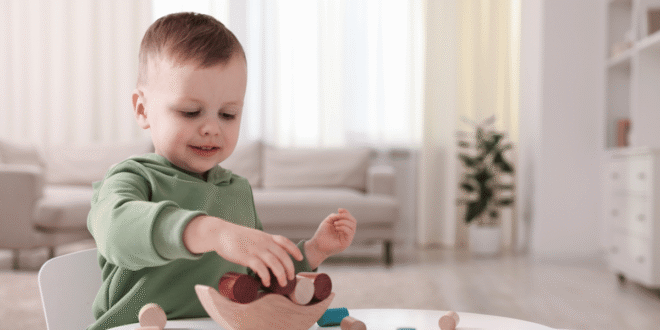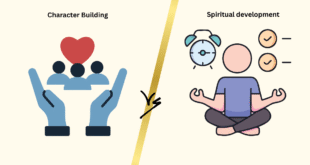Dr. Muhammad Younus Khalid- Tarbiyah Parenting Coach, Counseller and Consultant
Child development is a fascinating journey filled with milestones that indicate growth in various domains, including physical, cognitive, emotional, and social development. Among these, motor skill development plays a fundamental role in a child’s ability to explore, interact, and succeed in their environment.
Two primary types of motor skills are gross motor skills and fine motor skills. Understanding these skills and how they develop is crucial for parents, educators, and caregivers to support children’s holistic growth.
This article will explore what gross and fine motor skills are, their significance, developmental stages, red flags to watch for, and how to nurture them effectively.
What Are Motor Skills?
Motor skills refer to the ability of children to control and coordinate their muscles to perform specific tasks. They are essential for physical development and directly impact a child’s independence and confidence.
Motor skills are categorized into:
- Gross Motor Skills – Involving large muscles for big movements like walking, running, or jumping.
- Fine Motor Skills – Involving smaller muscles, particularly in the hands and fingers, for more precise tasks like writing, buttoning, or drawing.
Gross Motor Skills in Child Development
Gross motor skills are movements that engage large muscle groups, including the arms, legs, and torso. These skills are crucial for mobility, balance, coordination, and physical strength.
Examples of Gross Motor Skills
- Rolling over
- Sitting without support
- Walking and running
- Jumping
- Climbing stairs
- Throwing and catching a ball
- Riding a bicycle
Importance of Gross Motor Skills
Gross motor development is vital for a child’s overall growth:
- Promotes independence – Children can move freely and explore their surroundings.
- Boosts physical health – Active play strengthens muscles and bones.
- Improves cognitive development – Physical activity supports brain growth and problem-solving skills.
- Builds social skills – Group games like soccer or tag encourage teamwork and communication.
- Foundation for future activities – Strong gross motor skills are essential for sports and other physical activities later in life.
Stages of Gross Motor Development
| Age | Milestones |
| 0–6 months | Lifting head, rolling over, sitting with support |
| 6–12 months | Crawling, standing with assistance, walking with support |
| 1–2 years | Walking independently, climbing, throwing a ball |
| 2–3 years | Running steadily, jumping with both feet, climbing furniture |
| 3–4 years | Pedaling a tricycle, catching a large ball |
| 4–5 years | Skipping, hopping on one foot, balancing on a beam |
| 6+ years | Participating in organized sports, refined coordination and strength |
Activities to Enhance Gross Motor Skills
- Outdoor play – running, jumping, climbing
- Obstacle courses for balance and agility
- Swimming and water games
- Riding bikes or scooters
- Group sports like soccer or basketball
- Dancing or structured movement classes
Fine Motor Skills in Child Development
Fine motor skills involve small muscle movements, particularly in the hands, wrists, and fingers. These skills are necessary for performing precise tasks, often requiring hand-eye coordination.
Examples of Fine Motor Skills
- Grasping objects
- Stacking blocks
- Drawing or coloring
- Cutting with scissors
- Writing letters
- Tying shoelaces
- Buttoning or zipping clothes
Importance of Fine Motor Skills
Fine motor development has a direct impact on academic and life skills:
- Academic readiness – Writing, drawing, and cutting are essential for school activities.
- Independence – Tasks like feeding, dressing, and hygiene depend on fine motor control.
- Boosts self-confidence – Mastery of small tasks promotes a sense of achievement.
- Supports creativity – Arts and crafts activities enhance imagination and expression.
Stages of Fine Motor Development
| Age | Milestones |
| 0–6 months | Reflexive grasping, reaching for toys |
| 6–12 months | Pincer grasp (using thumb and forefinger), banging toys together |
| 1–2 years | Stacking 2–3 blocks, scribbling, turning book pages |
| 2–3 years | Drawing simple lines, using spoons, starting to dress with help |
| 3–4 years | Cutting with scissors, stringing beads, copying shapes |
| 4–5 years | Writing some letters, using zippers and buttons independently |
| 6+ years | Mastery of handwriting, tying shoelaces, complex craft activities |
Activities to Enhance Fine Motor Skills
- Drawing, coloring, and tracing
- Building with blocks or LEGO
- Stringing beads or threading activities
- Cutting shapes with safety scissors
- Puzzles and board games
- Cooking tasks like stirring or kneading dough
- Practicing handwriting or calligraphy
Gross vs. Fine Motor Skills: Key Differences
| Aspect | Gross Motor Skills | Fine Motor Skills |
| Muscles used | Large muscles – arms, legs, torso | Small muscles – hands, wrists, fingers |
| Examples | Walking, running, jumping | Writing, buttoning, cutting |
| Focus | Strength, balance, coordination | Precision, control, dexterity |
| Development age | Starts earlier (infancy) | Develops gradually through early childhood |
Why Both Skills Matter Together
Gross and fine motor skills are interlinked. For example:
- A child needs strong gross motor stability (sitting upright) to perform fine motor tasks like writing.
- Activities such as playing catch combine both skill sets—gross motor for throwing and fine motor for catching.
Neglecting either area can hinder a child’s overall development, affecting academics, self-care, and social interactions.
Signs of Motor Skill Delay
Early detection of delays in motor development is crucial. Parents and caregivers should watch for red flags:
Gross Motor Delays
- Not rolling over by 6 months
- Not walking by 18 months
- Poor balance or frequent falls
- Difficulty climbing stairs after age 3
Fine Motor Delays
- Trouble grasping toys by 12 months
- Inability to use a spoon by 2 years
- Struggling to hold crayons or pencils by age 3
- Difficulty buttoning clothes by age 5
If these signs are present, early intervention through occupational or physical therapy can make a significant difference.
Supporting Motor Skill Development at Home
Parents play a vital role in nurturing both gross and fine motor skills. Here are some tips:
For Gross Motor Skills
- Encourage outdoor playtime every day.
- Provide toys like balls, tricycles, and jump ropes.
- Play games that involve running, hopping, or dancing.
- Limit screen time to promote active play.
For Fine Motor Skills
- Offer age-appropriate puzzles and crafts.
- Practice everyday tasks like buttoning, zipping, and pouring.
- Introduce art activities such as painting or clay modeling.
- Use child-safe scissors to cut paper or crafts.
Role of Schools and Caregivers
Teachers and caregivers can integrate motor skill development into the classroom:
- Gross motor activities like physical education, yoga, and playground time.
- Fine motor stations with art supplies, writing practice, and manipulative toys.
- Regular assessments to monitor progress and identify delays early.
Motor Skills and Cognitive Development
Research shows a strong link between physical movement and brain development:
- Gross motor activities enhance memory, focus, and problem-solving abilities.
- Fine motor skills like handwriting improve reading and language comprehension.
- Physical play also reduces stress, boosting emotional well-being.
When to Seek Professional Help
If a child shows significant delays or regression in motor skills, consult:
- Pediatricians – for initial screening
- Occupational therapists – for fine motor skill therapy
- Physical therapists – for gross motor skill improvement
- Developmental specialists – for comprehensive evaluations
Early therapy ensures the child receives tailored strategies for overcoming challenges.
Conclusion
Gross and fine motor skills are cornerstones of child development, laying the foundation for independence, academic success, and social interaction. Parents, caregivers, and educators must work together to nurture these skills through play, structured activities, and consistent practice.
By understanding the milestones, challenges, and strategies involved, we can ensure every child grows into a confident, capable individual ready to take on life’s challenges.
 Edutarbiyah English Blog of Parenting and Tarbiyah
Edutarbiyah English Blog of Parenting and Tarbiyah



